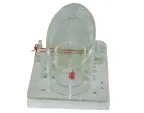In the medical field, surgical knotting is a fundamental and important skill. For medical novices, mastering accurate and fast knotting skills is an important step towards becoming a professional doctor. However, the traditional knotting training methods often have many limitations, such as poor training effect, feedback is not timely and so on. Therefore, the electronic knotting training model came into being and became an essential tool for medical novices to improve their knotting skills.
Using advanced electronic technology and sensors, the electronic knotting training model can simulate the knotting scene in real surgery, providing a safe and controllable training environment for medical novices. Through the model, novices can repeatedly practice various knotting techniques, such as one-handed knotting, two-handed knotting, continuous knotting, etc., so as to be familiar with and master the basic essentials and precautions of knotting.

Compared with traditional training methods, it has many advantages. First of all, the model has a high degree of simulation, which can truly simulate the knotting feel in the operation, so that the novice can feel the touch and force feedback similar to the actual operation during training. This simulation not only helps novices better master the knot-tying technique, but also improves their ability to cope in actual surgery.
In addition, it is convenient and repeatable. The model can be trained anytime, anywhere, regardless of time or place. At the same time, the model can also be repeatedly trained, so that novices can gradually master the knotting skills in continuous practice.
To sum up, the electronic knotting training model, as a necessary skill enhancement tool for medical novices, has many advantages such as high simulation, intelligent evaluation function, convenience and repeatability. Through model training, medical novices can master knotting skills more quickly and accurately, and lay a solid foundation for future clinical work.
